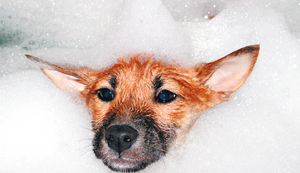The competition may be tough in creating a winning chemistry project for a science fair. However if you try to look at it as a fun learning project it will be more enjoyable. If you can also make the project something you are truly interested in your enthusiasm will show and help you towards your winning goal. There are many grade levels of chemistry projects and many ideas for each. Explore some of the ideas available and perhaps even come up with a variation of your own. Always remember that some chemistry projects can be dangerous and adult supervision is recommended for younger or less experienced participants.
Chemical Volcanoes:
A volcano project is ideal for younger students. The project is fairly safe and easy for beginners to accomplish. The ingredients for this project are probably items you already have on hand:
Empty plastic soda bottle or milk jug
Warm water
Liquid food color, red or orange
Liquid dish detergent
Baking soda
Vinegar
Small funnel
You will want to build a form around your volcano, this can be made from Paper Mache or a flour clay dough. You can decorate your volcano as much as desired and even build a valley around it if you have time. Do not cover the opening of your bottle. Using your funnel, fill your bottle most of the way with warm water. You can add your coloring to the bottle first or mix with the water. Add several drops of liquid detergent and 2 tablespoons of baking soda. Slowly add in your vinegar and wait for the volcano to erupt.
You will need to perform this for the judges while your water is warm so have all your ingredients on hand. You should be able to answer questions as to how much vinegar and baking soda is needed to create the eruption and how much time it takes for the reaction to occur. Also explain that the reaction produces a carbon dioxide gas just as a real volcano would. If you wish to increase to difficulty of this project for more experienced participants have them draw a diagram of the exact chemical reaction that has occurred.
Liquid density project:
Also an easy to create ,and safe project, involves liquid density. The difference in the level of this project involves being able to show and explain the density of each liquid. Figure out the various molecular densities of your ingredients and also be able to explain that mass equals volume times density. You can also explain that certain liquids repel each other or do not mix due to thickness.
A clean glass bottle or jar
Honey
Corn syrup
Liquid dish soap
Water
Vegetable oil
Rubbing alcohol
Lamp oil
The ingredients are listed in the order you will add them to your clean glass container. You may add small amounts of different colors of food dye to each liquid to identify them and create a rainbow effect. Experiment with this until you find the appropriate amounts of each liquid and be able to explain the amounts during your demonstration.
Magically bending bones:
This project will take longer to complete so having several stages set up for display will allow you to document the time involved and the reactions that are occurring. All you need for this project is a few glass jars with a lids, some small chicken bones and some vinegar.
Place your chicken bone in your jar, fill the jar with vinegar and cover it. The reaction time for this can take several days so for a complete science fair project you should have several jars, all with similar size chicken bones set up for show, each one day apart.
For your detail portion of your project be able to explain why a previously unbendable bone became soft and flexible. Vinegar is a mild acid but it will dissolve the calcium in the bone and the calcium is what makes the bone strong. Add details of the time involved and possibly even experiment before hand with different types of vinegar. Does the type of vinegar make a difference? Does the size of bone make a difference. To really increase the level of this project you can show a chemical diagram of what the reaction is between the calcium in the bone and the vinegar. You can also add to your project by experimenting with different environmental temperatures. Does the environmental temperature change the rate the calcium dissolves?
Each of these projects can be expanded of simplified to meet the experience level of the participant. All of them are safe enough not to create chaos at the science fair itself. There should be no real explosions or room filling foul odors.
References:
http://www.sciencebob.com/experiments/rubberbone.php
http://chemistry.about.com/od/elementfacts/a/elementdensity.htm
http://chemistry.about.com/od/chemistryactivities/a/densitycolumn.htm
http://chemistry.about.com/cs/howtos/ht/buildavolcano.html



